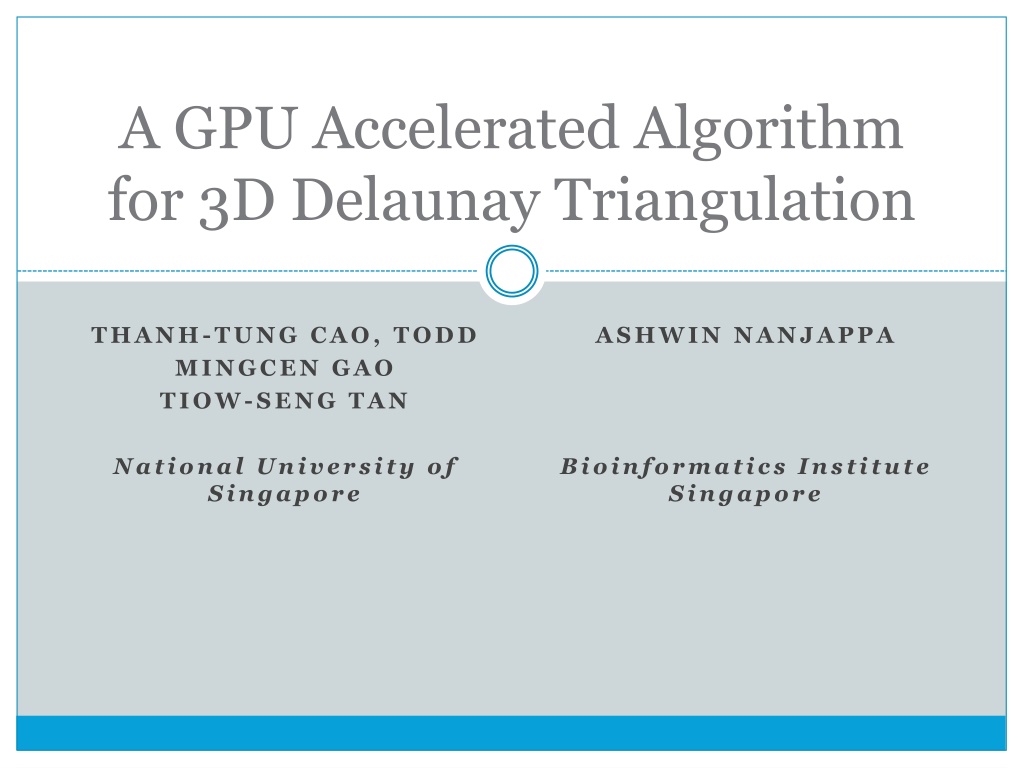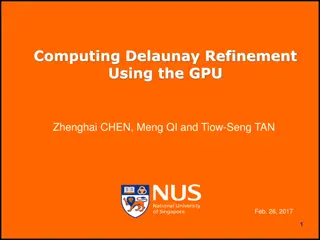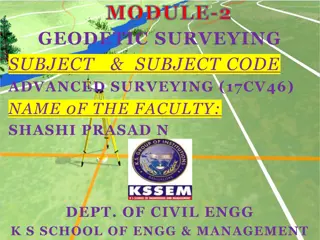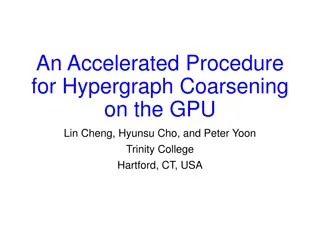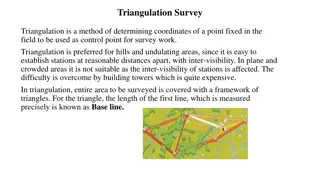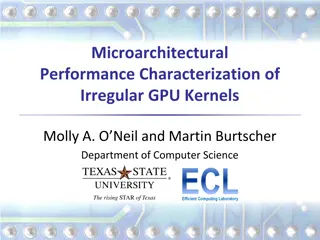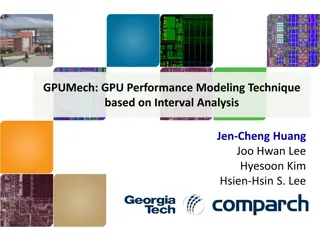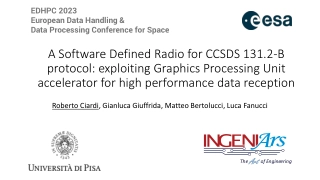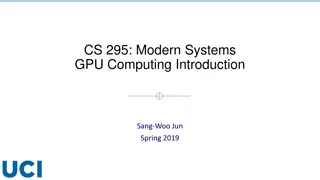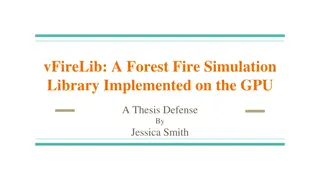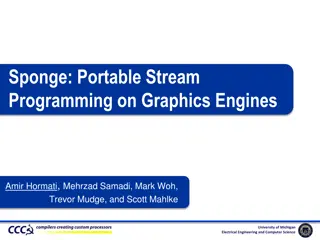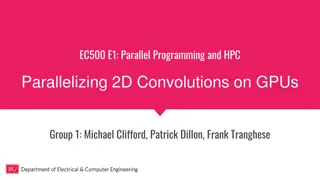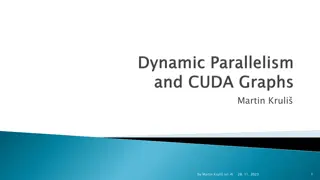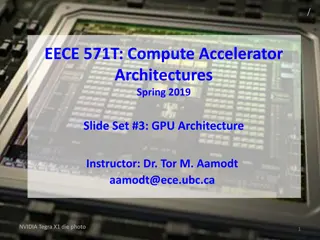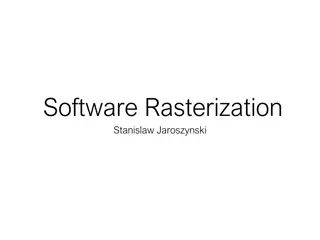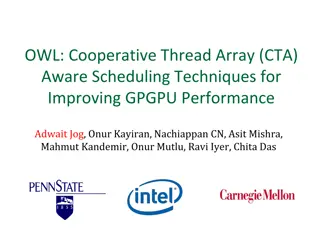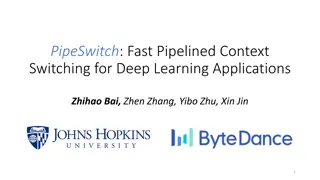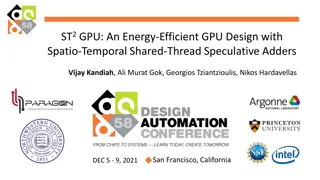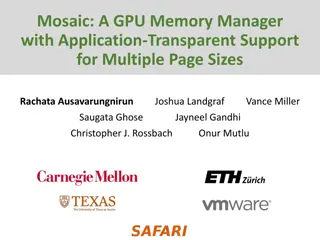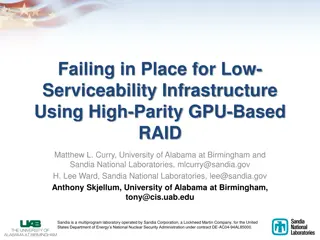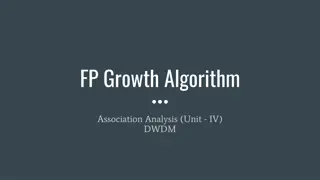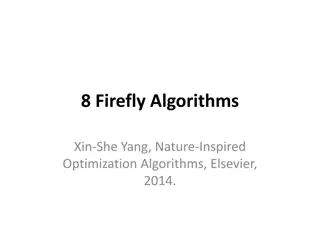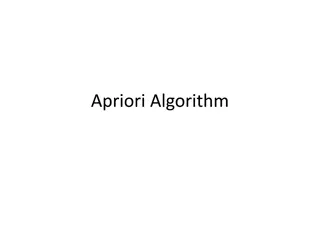GPU Accelerated Algorithm for 3D Delaunay Triangulation
Thanh-Tung Cao, Todd Mingcen Gao, Tiow-Seng Tan, and Ashwin Nanjappa from the National University of Singapore's Bioinformatics Institute present a GPU-accelerated algorithm for 3D Delaunay triangulation. Their work explores the background, related works, algorithm implementation, and results of this innovative approach. The algorithm's application in graphics, CAD, visualization, and scientific computation is highlighted, emphasizing both sequential and parallel algorithms. The authors discuss the challenges faced, such as flipping and bad facets, and propose solutions to enhance the Delaunay triangulation process, showcasing their outcomes at the i3D '14 conference.
Download Presentation

Please find below an Image/Link to download the presentation.
The content on the website is provided AS IS for your information and personal use only. It may not be sold, licensed, or shared on other websites without obtaining consent from the author. Download presentation by click this link. If you encounter any issues during the download, it is possible that the publisher has removed the file from their server.
E N D
Presentation Transcript
A GPU Accelerated Algorithm for 3D Delaunay Triangulation THANH-TUNG CAO, TODD MINGCEN GAO TIOW-SENG TAN ASHWIN NANJAPPA National University of Singapore Bioinformatics Institute Singapore
Outline Background 2 Background Related work Algorithm Implementation Result 9/17/2024 i3D '14
Background Outline 3 Delaunay Triangulation Empty ball property 3D 2D Applications 9/17/2024 i3D '14
Background Related work 4 Applications: Graphics CAD Visualization Scientific computation Sequential algorithms 9/17/2024 i3D '14
Related work Background 5 Sequential algorithms: Incremental construction Divide-and-conquer Incremental insertion Points are inserted one by one Triangulation is locally fixed after each insertion Bowyer-Watson s algorithm [1981] Flipping algorithm [Joe 1991] Parallel algorithms 9/17/2024 i3D '14
Related work 6 Parallel and multi-core algorithms: Incremental construction high complexity Domain partitioning GPU needs thousands of partitions Incremental insertion [Batista et al. 2010] Several points are inserted at a time Each insertion modifies a small region Conflict Rollback GPU algorithms 9/17/2024 i3D '14
Related work Algorithm 7 GPU algorithms: Experiment with Batista et al. s approach 1 million points At most 2000-3000 points can be inserted in each round Digital Voronoi diagram approach [Qi et al. 2012] Dualization not working in 3D Our algorithm 9/17/2024 i3D '14
Algorithm Related work 8 Overall approach: Insert points in batches, each batch at most one point is inserted into a tetrahedron Use flipping to get close to the DT Use star-splaying in CPU to fix [Shewchuk 2005] Problem: Flipping easily gets stuck! 100K points, 6,800 bad facets (non-Delaunay and unflippable). Worse for real-world data. Insert - Flip 9/17/2024 i3D '14
Algorithm 9 Observation: Do flipping after each round of point insertion Much better result. 100K points, 96 bad facets (vs. 6,800) Bunny model (36K points), 92 bad facets Now correction on CPU is acceptable. Star splaying 9/17/2024 i3D '14
Algorithm 10 CPU correction: star splaying algorithm Lifting map: w = x2 + y2 + z2 Each vertex: construct a convex star. Consistency: If the star of s contains tetrahedron stuv, then the star of t,u, and v must also contain that tetrahedron. u u t s s t r v 2D illustration Difficulties 9/17/2024 i3D '14
Algorithm 11 CPU correction: star splaying algorithm Difficulties: Time consuming Construct convex stars (incremental insertion) Check all the stars for inconsistencies Convert stars back to mesh representation Adaptive star splaying 9/17/2024 i3D '14
Algorithm 12 Adaptive star splaying Only some small regions around the bad facets are processed Construct stars incident to the bad facets. Almost convex use Flip-Flop [Gao et al. 2013] Need another star derive from the triangulation. Non-Delaunay & unflippable Non-convex stars Almost output sensitive. Affected region 2D illustration Pseudo-code 9/17/2024 i3D '14
GPU Implementation Algorithm 13 Initialize; While there are points not inserted Pick one point per tetrahedron and insert; While there are modified tetrahedra Collect the modified tetrahedra; Process and identify possible flips; Perform the flips; Update location of remaining points; Divergence 9/17/2024 i3D '14
GPU Implementation 14 Thread divergence: Compact the list of modified tetrahedra before processing Exact predicates [Shewchuk 1996] Use only fast check in 1st kernel Collect those that require exact computation Do the exact computation in 2nd kernel Point location: Store the flips, build flip history DAG Trace the DAG to locate Memory 9/17/2024 i3D '14
GPU Implementation Result 15 Memory access: Rearrange the data to improve the GPU cache efficiency. Sort the input points by the Z-curve Sort the tetrahedra list by the minimum vertex indices. Experiment setting 9/17/2024 i3D '14
Result Implementation 16 Experiment settings: CPU: Intel I7 2600K 3.4Ghz, 16GB RAM GPU: NVIDIA GTX 580, 3GB VRAM CUDA 5.0, VS 2012. CGAL 4.2 3D Speedup 9/17/2024 i3D '14
Result 17 3D Speedup: Synthetic data: Uniform, Gaussian, sphere, grid. Up to 1.5 million points 8-10 times faster than CGAL Real models: Armadillo, Angel, Dragon, Happy Buddha 6-9 times speedup over CGAL 2D Speedup 9/17/2024 i3D '14
Result 18 Also implement for 2D DT: Synthetic data: 10 times over Triangle, 7 times over CGAL 2 times faster than [Qi et al. 2012] Time breakdown 9/17/2024 i3D '14
Result 19 Time breakdown Insert-Flip vs. InsAll-Flip 9/17/2024 i3D '14
Result Conclusion 20 Insert-Flip vs. InsertAll-Flip 100 times less bad facets 40% less flips Conclusion 9/17/2024 i3D '14
Conclusion Result 21 New algorithm for DT construction on GPU Both 2D and 3D (possibly higher) Uniform and non-uniform point set Exact computation, robust. Limitation: Needs to copy the result to CPU for splaying Sequential flipping on some pathological cases Memory bound implementation END 9/17/2024 i3D '14
End 22 Thank you! 9/17/2024 i3D '14
GPU Implementation 23 Point location: Store the flips in all the iterations Construct the history DAG of flips Update the point location at the end Memory access 9/17/2024 i3D '14
Result 24 Stars involved in the CPU star splaying Significantly more for non-uniform point sets Still reasonably small Insert all - Flip 9/17/2024 i3D '14
